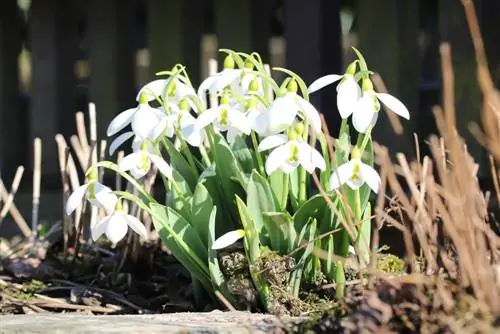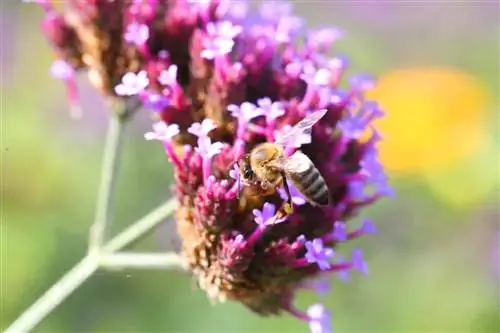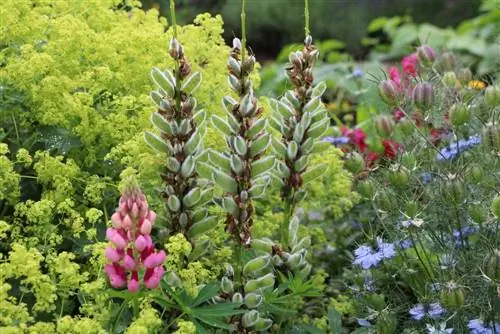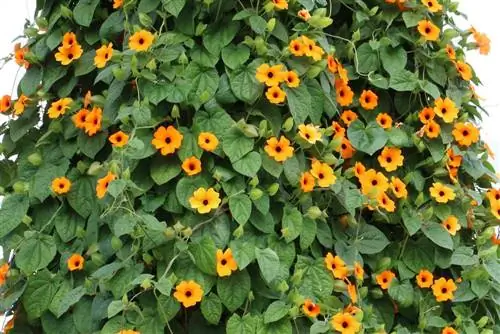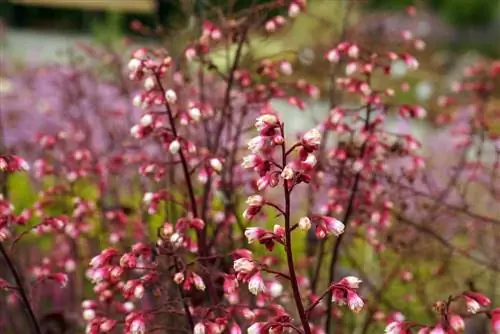- Author admin [email protected].
- Public 2023-12-17 03:39.
- Last modified 2025-01-24 12:45.
If the garden is still in hibernation, the snowdrops are already putting out their white flower heads. The delicate messengers of spring should not be missing from any creative planting plan, because with them the anticipation of the most beautiful time of the year moves into the private green realm. The following profile shows which attributes characterize this little flower miracle. There is also useful information about the flowering times of the most beautiful species. The understandable instructions for professional planting reliably prevent small beginner mistakes.
Profile
- Plant family: Amaryllis family (Amaryllidaceae)
- Genus: Snowdrop (Galanthus)
- Number of known species: 25
- Native to Europe and Asia to the Caucasus
- Perennial, herbaceous plants with onions as a survival organ
- Growth height: 2 to 20 cm
- Flowering period: February to April
- Major use: ornamental flower for beds and pots
- Special property: poisonous
- Common names: milk flower, white maiden
All wild species of the genus Galanthus are subject to species protection and may not be removed from the wild.
Flowering time
Although all species within the genus bloom in white, the flowering period extends over divergent periods. The following overview shows when the most popular species and varieties bloom:
- Small snowdrop (Galanthus nivalis): end of January/beginning of February to mid/end of March
- Double snowdrop (Galanthus nivalis 'Flore Pleno'): February to March
- Large-flowered snowdrop (Galanthus elwesii var elwesii): February to April
- Caucasus snowdrop (Galanthus alpinus): February to May
- Petite snowdrop (Galanthus gracilis): February to May
- Lake Riza snowdrop (Galanthus rizehensis): January to early April
An exceptional phenomenon within the genus comes under the name Queen Olga snowdrop (Galanthus reginae-olgae). The flowering period of this wild species begins in December and extends into March if the weather is favorable. Therefore this species is also known as the autumn snowdrop.
Plants
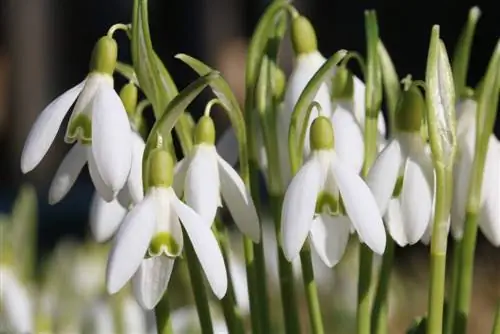
In order for the snowdrop to emerge from cover earlier than most other flowers, it is important to plant it professionally. The focus is also on choosing the right location and using perfect flower bulbs. All important aspects are examined in detail below.
Planting time
So that snowdrops give their best at the right time, experienced hobby gardeners plant the bulbs in the ground in September, or October at the latest. The winter cold or a thick blanket of snow that occurs later in the year do not affect the plants. Early-blooming bulbous flowers are capable of producing their own bioheat, which protects the delicate flowers from freezing from January/February.
Quality of plant products
Whether the planting of snowdrops is completely satisfactory depends on the quality of the flower bulbs. This is what the planting material should be like:
- Juicy, plump onions
- No signs of dryness or mold
- A he althy onion skin without any injury
By the way, passionate snowdrop lovers - also known as galanthophiles - do not buy bulbs pure, but rather purchase the plants when they are green. This is primarily because the variety cannot be identified from a dormant onion. Since snowdrops cope well with transplanting as long as the roots are not damaged, there is nothing wrong with this approach. If you look around at the snowdrop events in spring, you can get some bargains here in the form of particularly beautiful or rare varieties.
Location
In the wild, snowdrops can be discovered at the edge of the forest, in floodplains or forest meadows and along hiking trails. Wherever there are fresh, moist and bright conditions, the delicate flower beauties settle. The following conclusions can therefore be drawn for the location in the garden:
- Sunny to shady location
- Humose, fresh soil
- Ideally in the protection of trees and perennials
- Soil with good drainage
- Preferably slightly calcareous
As long as the soil is not heavy and waterlogged, snowdrops like to spread. Even in lawns that are not too dry, the busy mini flowers settle in large numbers and multiply into dense carpets of flowers within just a few years.
Tip:
In view of the toxic content, wearing gloves is strongly recommended when planting and caring for snowdrops.
Planting instructions
So that snowdrops can quickly establish themselves in the chosen location, the soil is first carefully cleaned of weeds, stones and roots. The finer the topsoil, the more beneficial it is for spring flowers. If the soil quality does not meet the desired requirements, improvement measures are taken. Heavy soil is loosened up with washed sand, while soil that is too sandy is optimized with compost or bark humus. Then follow these steps:
- Create planting holes with a depth of 8-10 cm
- Insert the flower bulbs so that the tip points upwards
- Arrange the snowdrops 5-7 cm apart without the bulbs touching each other
Finally, cover the planting site with a layer of soil at least 5 centimeters thick and water. Creative gardeners plant snowdrops in small tuffs.
Tip:
A mulch layer of leaf mold or peat moss protects newly planted snowdrop bulbs from severe frost in the first winter.
Repel voles
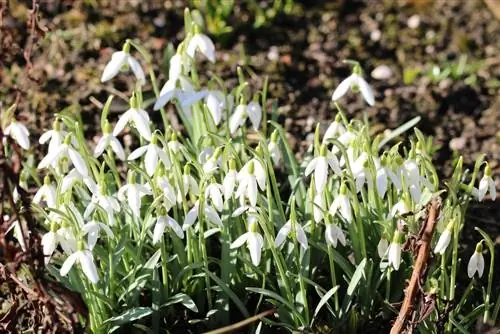
If a vole infestation is feared in the bed, preventive measures are essential. Unfortunately, the delicate flower bulbs are at the top of the menu for these pests. To prevent rodents from messing with them, place snowdrops in the ground along with a vole basket. This is a close-meshed, rectangular wire mesh that is available from specialist retailers. Here's how to do it:
- Create a planting pit with a depth of 15 cm
- Place the vole basket in it
- Spread a 2-3 cm high layer of sand on the bottom of the pit
- Fill in the excavation again and plant the flower bulbs
A wire mesh as a lid is not necessary for vole baskets, as the animals do not reach the surface. Careful hobby gardeners mark the planting site after watering so that people don't accidentally dig it up.
Plants in pots and balcony boxes
In the planter, snowdrops create a distinctive appearance on window sills, the balcony and a terrace. We recommend commercial potting soil as a substrate, which is additionally loosened up with the help of sand. Avoid using cheap products as they have too high a peat content. Due to winter moisture, the soil becomes very compact and deprives the small flower bulbs of the air they need to breathe. High-quality potted plant soil meets the requirements much better. Follow these steps to properly plant snowdrops in pots and flower boxes:
- Create a drainage system using pebbles or pottery shards over the water drain
- Spread an air and water permeable garden fleece over it
- Fill in the substrate to insert the snowdrop bulbs approx. 8 cm deep
A small watering edge effectively prevents the substrate-water mixture from spilling over. Covering the drainage prevents soil crumbs from immediately clogging up the coarse-grained material and waterlogging still occurs.
Advancing in the pot
Create a spring-like bloom of snowdrops on the winter windowsill. This can be done easily by pushing it forward in the pot. To do this, plant the flower bulbs in the ground in September and place the container in a shady location in the garden until frost hits. In order for snowdrops to germinate, they need a cold stimulus for several weeks with temperatures below 9 degrees Celsius. Then carry the snowdrops into the warm room, where the first flowers will appear after about 14 days. Don't miss regular watering.
Beautiful plant neighbors
Combine snowdrops with the following spring flowers to increase the color spectacle in the bed and planter:
- Early blooming cyclamen (Cyclamen coum)
- Squill (Scilla)
- Snow Crocus (Crocus chrysanthus)
- Fairy crocus (Crocus tommasinianus)
- Spring Anemone (Anemona blanda)
- Lenzenrose (Helleborus orientalis)
- Winter aconite (Eranthis hyemalis)
Not to forget the very early blooming daffodil variety 'Rijnveld's Early Sensation'. You can create a picture of opulent abundance with a combination of evergreen ground cover plants, such as ivy (Hedera), from which snowdrops protrude like little white lamps.
Tip:
Only plant snowdrops in the lawn if you can be patient until the first mowing. The lawnmower is only used when all the leaves have been pulled in. Otherwise you won't see any flowers next year.
Conclusion
So that snowdrops in the garden herald the approach of spring, the flower bulbs are planted in the fall of the previous year. Protection against voles is just as important as the careful choice of a semi-shady to shady location, ideally in the protection of deciduous trees. The flowering time depends on the species and variety, as flowering is not always limited to February and March. This profile shows what else makes the snowdrop special.

